Today’s Current Affairs: 19th December 2022 for UPSC IAS exams, State PSC exams, SSC CGL, State SSC, RRB, Railways, Banking Exam & IBPS, etc
Table of Contents
Pradhan Mantri Virasat Ka Samvardhan Scheme:

Pradhan Mantri Kaushal Ko Kaam Karyakram (PMKKK) has been named as Pradhan Mantri Virasat Ka Samvardhan (PM VIKAS) Scheme by the Ministry of Minority Affairs.
- It is a Central-Sector Scheme, which focuses on the skilling, entrepreneurship and leadership training requirements of the minority and artisan communities across the country.
- This is an integrated scheme that converges five erstwhile schemes of the Ministry of Minority Affairs viz,
- This is a placement linked skill development scheme for minorities aiming to upgrade the skills of minority youth in various modern/traditional skills depending upon their qualification, present economic trends and market potential
- USTTAD (Upgrading the Skills & Training in Traditional Arts/Crafts for Development): It aims to promote and preserve the rich heritage of the traditional arts & crafts of the minority communities.
- Hamari Dharohar: It has been formulated to preserve rich heritage of minority communities of India.
- Nai Roshni: It is a Leadership Development Programme for women belonging to minority communities in the age group of 18 to 65 years. It was started in 2012-13.
- Nai Manzil: The scheme aims to benefit the youth (both men & women) belonging to six notified minority communities of 17-35 years of age, who do not have formal school leaving certificate. The scheme has been approved by the Cabinet for the period of 15th Finance Commission.
World Bank Report On Air Pollution:
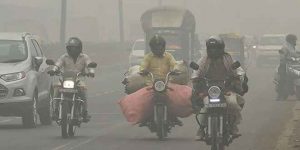
The World Bank released a report titled ‘Striving for Clean Air: Air Pollution and Public Health in South Asia’.
- The report details how persisting with policies currently being implemented (largely since 2018) will yield results but not to the desired level.
Highlights of the Report:
- Six large airsheds exist in South Asia, where the air quality in one can affect the air quality in another. They are:
- West/Central Indo-Gangetic Plain (IGP) that included Punjab (Pakistan), Punjab (India), Haryana, part of Rajasthan, Chandigarh, Delhi, Uttar Pradesh.
- Central/Eastern IGP: Bihar, West Bengal, Jharkhand, Bangladesh
- Middle India: Odisha/Chhattisgarh
- Middle India: Eastern Gujarat/Western Maharashtra
- Northern/Central Indus River Plain: Pakistan, part of Afghanistan; and
- Southern Indus Plain and further west: South Pakistan, Western Afghanistan extending into Eastern Iran.
- When the wind direction was predominantly northwest to the southeast, 30% of the air pollution in Indian Punjab came from the Punjab Province in Pakistan and, on average, 30% of the air pollution in the largest cities of Bangladesh (Dhaka, Chittagong, and Khulna) originated in India.
- In some years, substantial pollution flowed in the other direction across borders.
- Currently over 60% of South Asians are exposed to an average 35 µg/m3 of PM2.5 annually.
- In some parts of the IGP it spiked to as much as 100 µg/m3 – nearly 20 times the upper limit of 5 µg/m3 recommended by the World Health Organisation (WHO).
- Large industries, power plants and vehicles are dominant sources of air pollution around the world, but in South Asia, other sources make substantial additional contributions.
- These include combustion of solid fuels for cooking and heating, emissions from small industries such as brick kilns, burning of municipal and agricultural waste, and cremation.
Open Network For Digital Commerce : Updates

Open Network for Digital Commerce (ONDC) will charge a “small fee” from platforms that will contribute towards “maintenance and development” of the network.
- The network will seek to reduce the compulsory commissions charged from sellers and logistics partners on the network by private e-commerce firms such as US-based Amazon and homegrown Flipkart the two largest e-commerce firms in the country.
- ONDC is an open e-commerce protocol set up by the Ministry of Commerce’s Department of Promotion of Industry and Internal Trade (DPIIT).
- Under ONDC, it is envisaged that a buyer registered on one participating e-commerce site (for example, Amazon) may purchase goods from a seller on another participating e-commerce site (for example, Flipkart).
- Presently, buyers and sellers have to be on the same app for a transaction which happens through the same platform. For example, a buyer needs to go to Amazon, to buy a product from a seller on Amazon.
- Objectives:
- Democratisation and decentralization of eCommerce
- Inclusivity and access for sellers, especially small and medium enterprises as well as local businesses
- Increased choices and independency for consumers
Water Worlds : Two Exoplanets
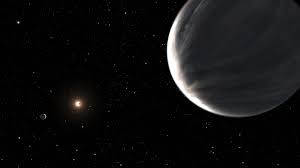
A new study, a team of astronomers have found water worlds, two exoplanets orbiting a red dwarf star.
- These exoplanets are Kepler-138c and Kepler-138d, which were observed using NASA’s Hubble and retired Spitzer space telescope.
- It is the first-time planets are confidently identified as water worlds, a type of planet that was theorized by astronomers to exist for a long time.
- The exoplanets are located in a planetary system that is 218 light years away in the constellation Lyra and are unlike any planets in our solar system.
- The new planet takes 38 days to complete an orbit.
- It is in the habitable zone, meaning it is located in an orbit that receives just the right amount of heat from its star to allow water to exist in a liquid form.
Findings:
- Kepler- 138c and d are made up of ingredients lighter than rock (rocky planets like Earth) but heavier than hydrogen or helium (gas-giant planets like Jupiter).
- This signals the presence of water, up to half of the mass of the twin worlds should be water.
- The volume of the two is three times that of Earth and mass twice as big, they calculated.
- They are also larger-scale versions of Enceladus (Saturn’s moon) and Europa (Jupiter’s moon).
- The density of the twin exoplanets is lower than Earth but comparable to Enceladus and Europa.
- Until now, worlds slightly larger than Earth would likely have rocky features.
- These twin planets of the same size and mass are more massive than Earth but lighter than ice giants Uranus and Neptune.
- But they are different from the planets in our solar system, which is chiefly composed of rocky planets like Earth and gas giants like Jupiter.
Ikki Jathre : Festival Of Rice
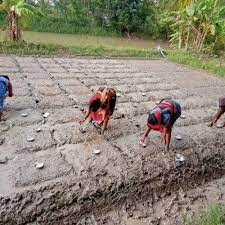
A Kerala-based organisation, Thanal launched the Ikki Jathre or the Festival of Rice in tribal parlance whereby 300 climate-resilient varieties of traditional rice were planted at Panavally, Wayanad.
- Thanal initiated the Rice Diversity Block (RDB) at Panavally under the Save Our Rice campaign in 2009, with a collection of 30 varieties of rice which now expanded to 300.
- The initiative aims to sensitise people to the significance of conserving traditional crops that have the ability to withstand harsh climatic conditions.
- The festival also sets the stage for knowledge sharing and co-creation of knowledge between tribal farmers and experts.
- For the RDB, most of the varieties were collected from Kerala, Karnataka, Assam, Tamil Nadu, Arunachal Pradesh, Maharashtra and West Bengal.
- Also, there are three traditional rice varieties from Vietnam and Thailand.
GI Status For Kerala’s Five Agricultural Products:
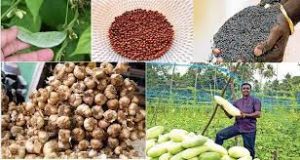
Five agricultural products of Kerala- Attappady Attukombu Avara, Attappady Thuvara, Onattukara Ellu, Kanthalloor-Vattavada Veluthulli, and Kodungalloor Pottuvellari have been granted Geographical Indication (GI) status.
- The Gamosa (traditional cloth) of Assam, Alibag White Onion from Maharashtra, Ladakh Raktsey Karpo Apricot and Tandur Redgram of Telangana also got GI tag recently.
Attappady Attukombu Avara (Beans):
- It is curved like a goat’s horn as its name indicates.
- Its higher anthocyanin content compared to other dolichos beans imparts violet colour in the stem and fruits.
- Anthocyanin is helpful against cardiovascular diseases along with its antidiabetic properties.
- The higher phenolic content of Attappady Attukombu Avara imparts resistance against pest and diseases, making the crop suitable for organic cultivation.
Attappady Thuvara (Red Gram):
- It is having seeds with white coat.
- Compared to other red grams, Attappady Thuvara seeds are bigger and have higher seed weight.
Onattukara Ellu (Sesame):
- Onattukara Ellu and its oil are famous for its unique health benefits.
- Relatively higher antioxidant content in Onattukara Ellu helps in fighting the free radicals, which destroy the body cells.
- Also, the high content of unsaturated fat makes it beneficial for heart patients.
Kanthalloor-Vattavada Veluthulli (Garlic):
- Compared to the garlic produced in other areas, this garlic contains higher amount of sulphides, flavonoids, proteins and also rich in essential oil.
- It is rich in allicin, which is effective against microbial infections, blood sugar, cancer, etc.
Kodungalloor Pottuvellari (Snapmelon):
- This snap melon, which is harvested in summer, contains high amount of Vitamin C.
- Compared to other cucurbits, nutrients such as calcium, magnesium, fibre and fat content are also high in Kodungalloor Pottuvellari.
Kazind – 2022:

The 6th Edition of India – Kazakhstan joint training exercise “KAZIND-22” is being conducted at Umroi (Meghalaya).
- Kazind – 2022 is a joint annual training exercise with the Kazakhstan Army and was instituted in 2016 as Exercise Prabal Dostyk, which was later upgraded to a company level exercise and renamed as Ex Kazind in 2018.
- Aim: To build positive military relations, imbibe each other’s best practices and promote the ability to operate together while undertaking counter terrorist operations in semi urban / jungle scenario.
First Global Water Survey Satellite:
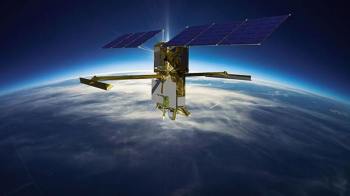
NASA to conduct the first global survey of Earth’s surface waters, shedding new light on the mechanics and consequences of climate change.
- The Surface Water and Ocean Topography satellite, or SWOT, incorporates advanced microwave radar technology to collect high-definition measurements of oceans, lakes, reservoirs, and rivers over 90% of the globe.
- The data, compiled from radar sweeps of the planet at least twice every 21 days, will be used to enhance ocean circulation models, bolster weather and climate forecasts, and aid in managing scarce freshwater supplies in drought-stricken regions.
Sanskrit Problem In Panini’s ‘Ashtadhyayi’:

A grammatical problem that has defeated Sanskrit scholars since the 5th Century BC has finally been solved by Rishi Rajpopat, an Indian PhD student at the University of Cambridge. Experts are calling the discovery revolutionary, as it may allow Panini’s grammar to be taught to computers for the first time.
- Panini probably lived in the 4th century BC, the age of the conquests of Alexander and the founding of the Mauryan Empire, even though he has also been dated to the 6th century BC, the age of The Buddha and Mahavira.
- He likely lived in Salatura (Gandhara), which today would lie in north-west Pakistan, and was probably associated with the great university at Taksasila, which also produced Kautilya and Charaka, the ancient Indian masters of statecraft and medicine respectively.
- ‘Ashtadhyayi’, or ‘Eight Chapters’, is an ancient text written by the scholar Panini towards the end of the 4th century BC.
- It is a linguistics text that set the standard for how Sanskrit was meant to be written and spoken.
- It delves deep into the language’s phonetics, syntax and grammar, and also offers a ‘language machine’, where one can feed in the root and suffix of any Sanskrit word, and get grammatically correct words and sentences in return.
- Panini’s grammar, which built on the work of many earlier grammarians, effectively stabilized the Sanskrit language.
- The Ashtadhyayi laid down more than 4,000 grammatical rules.
- Later Indian grammars such as the Mahabhasya of Patanjali (2nd century BC) and the Kasika Vritti of Jayaditya and Vamana (7th century AD), were mostly commentaries on Panini.
E-20 Fuel: Soon To Be Launched
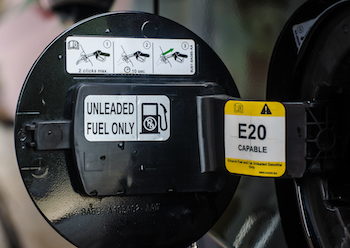
Union Petroleum and Natural Gas Minister has recently said that India will soon launch E-20 fuel with 20% blending of ethanol.
- The E20 fuel is a twenty percent blend of Ethanol and eighty percent of fossil-based fuel.
- The introduction of E20 fuel has the motive of reducing the reliance on fossil-based fuels for building a more sustainable society for the future and reducing vehicular emissions.
- It is expected to reduce air pollution, being lesser polluting than petrol.
- The government foresees oil import savings to the tune of Rs. 30,000 crores annually.
- Ethanol fuel is ethyl alcohol, the same type of alcohol found in alcoholic drinks.
- It is most commonly utilized as a motor fuel, primarily as a biofuel addition in gasoline.
- Biomass is commonly utilized for making ethanol, such as corn or sugarcane. India’s abundance of sugarcane production is pivotal to the push toward ethanol-based fuel.
Group Of Friends : To Promote Accountability For Crimes Against Peacekeepers
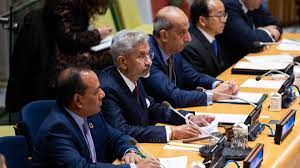
India, Bangladesh, Egypt, Morocco and Nepal will co-chair the ‘Group of Friends’ to promote accountability for crimes against peacekeepers.
- India will soon launch a database that will record all crimes against the Blue Helmets
UN Peacekeeping:
- Peacekeeping by the United Nations is a role held by the Department of Peace Operations as an “instrument developed by the organization as a way to help countries torn by conflict to create the conditions for lasting peace”
- Peace operations are also being conducted in an ambiguous and complex environment
- Today’s peacekeeper is not mandated to keep the peace but to take on robust mandates in extremely hostile conflict zones.
- The involvement of armed groups, terrorists and transnational organised crime has adversely impacted their operations,
- There have been scandals where the UN missions appear to have not done enough on corruption.
- UN military peacekeepers have not acted to protect civilians from violence, such as in South Sudan.
- UN Resolution 2589 calls upon the member states to take all appropriate measures against perpetrators of violence against UN personnel
India’s First 5G-Enabled Auto Manufacturing Unit:

Bharti Airtel and Tech Mahindra have announced a strategic partnership under which they have deployed a “5G for Enterprise” Solution i.e., a ‘captive private network’ at Mahindra and Mahindra’s Chakan facility in Maharashtra, making it India’s first 5G- enabled auto manufacturing unit.
- The partnership is in line with Tech Mahindra’s NXT.NOWTM framework, which aims to enhance the “Human Centric Experience”, focuses on investing in emerging technologies and solutions that enable digital transformation and meet the evolving needs of the customer.
- As the industry 4.0 paradigm gathers momentum, reliable data networks will prove to be a key differentiator in factory and manufacturing performances.
- The fifth generation of mobile networks, or 5G, is what comes after the 2G, 3G, and 4G generations. 5G is expected to deliver substantially higher connection speeds.
Doxxing:

Twitter has recently suspended the account of several journalists, and according to its owner Elon Musk, this was in continuation of the social media platform’s new anti-doxxing policy.
- Doxxing :A contraction of the phrase, “dropping documents”, doxxing is the act of revealing personal or identity-revealing information about someone online, such as their real name, personal documents, phone number, home address, workplace, and other financial information.
- In the process of doxxing, personal information is circulated in the public sphere without the knowledge of the victim, and in some cases, causing real-life consequences.
- It is a popular and controversial tactic used against those with opposing political views and sometimes even celebrities and influencers have been doxxed with real-life consequences.
- In many cases, harassers have used this private information to send SWAT teams or armed police to the homes of many of the victims.
Sovereign Gold Bond Scheme 2022-23 – Series III:

RBI has announced the Sovereign Gold Bond Scheme 2022-23 – Series III, which will be open for subscription from December 19 to December 23.
- Gold bonds are government securities denominated in grams of gold.
- They are substitutes for holding physical gold.
- Investors have to pay the issue price in cash and the bonds will be redeemed in cash on maturity.
- The bond is issued by the RBI on behalf of the government.
- These bonds offer a superior alternative to holding gold in physical form.
- The risks and costs of storage are eliminated.
- Investors are assured of the market value of gold at the time of maturity and periodical interest.
- It’s free from issues like making charges and purity in the case of gold in jewellery form.
- The bonds are held in the books of the RBI or in demat form eliminating risk of loss.
- While the tenor of bonds is eight years, it can be redeemed after five years.




